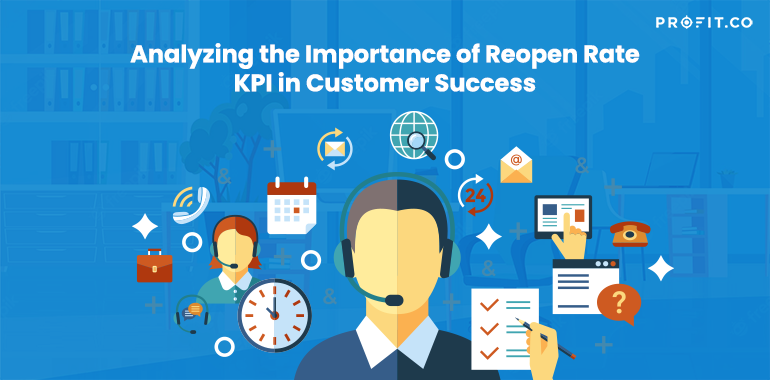Introduction
In today’s fiercely competitive business environment, measuring key performance indicators (KPIs) is crucial for organizations to evaluate their success and identify areas for improvement. One such important KPI is the Reopen Rate. In this blog post, we will explore the definition and formula of Reopen Rate and understand its significance in tracking customer satisfaction and operational efficiency. When customers experience high-effort issue resolutions, they are 96% more likely to be disloyal to brands and 81% more likely to share negative word-of-mouth. So this blog helps you to explore how to manage tickets by decreasing the possibility of reopening them with the proper solution and skills.
Definition of Reopen Rate
Reopen Rate is a metric used to measure the frequency at which support tickets or cases are reopened by customers after they have been marked as resolved or closed. It is primarily utilized in customer service or support departments to evaluate the effectiveness of their problem-solving processes and identify recurring issues or gaps in average satisfaction scores.
Your most unhappy customers are your great source of learning.
Understanding the Formula
The formula for calculating the Reopen Rate is relatively straightforward. It is calculated by dividing the number of reopened tickets or cases by the total number of resolved or closed tickets and then multiplying the result by 100 to express it as a percentage.

For instance, if you had a total of 100 resolved or closed tickets and out of those, customers reopened 20 tickets, the Reopen Rate would be calculated as follows:
Reopen Rate = (20 / 100) x 100 = 20%
Interpreting Reopen Rate
The Reopen Rate provides valuable insights into the effectiveness of customer support quality and problem-resolution processes. A high Reopen Rate indicates that a significant number of tickets per customer are experiencing issues that are not adequately addressed in the first instance, leading to the need for ticket reopening. On the other hand, a low Reopen Rate suggests that customers are generally satisfied with the initial resolution and do not encounter recurring problems.
To drive success through measurable goals and improved customer satisfaction, align your organizational objectives with Profit.co’s OKRs and optimize your support processes by monitoring the Reopen Rate KPI.
To optimize the support process, try using KPIs
OKR Examples to Decrease Reopen Rate
Objective: Minimize Reopen Rate and Improve ticket resolution Efficiency
Key Result 1: Reduce Reopen Rate from 40% to 20%
Initiative: Implement effective measures, such as improved initial ticket analysis, comprehensive troubleshooting, and thorough documentation.
Key Result 2: Increase First Contact Resolution (FCR) from 60% to 75%
Initiative: Focus on agent training and empowerment with relevant information by equipping them with efficient tools to resolve issues promptly, thereby reducing the need for multiple interactions.
Key Result 3: Decrease Average Ticket Handling Time from 400 Seconds to 300 Seconds
Initiative: Streamline ticket handling processes, optimize workflows, and provide agents with necessary training and tools to handle tickets efficiently.
Why do you Need to Focus on Reopen Rate KPI?
Focusing on the Reopen Rate KPI is crucial because it reflects customer satisfaction with support, helps identify operational inefficiencies, and drives continuous improvement in products and services.
Customer satisfaction
Reopen Rate serves as an essential indicator of customer satisfaction. Higher rates imply that customers are dissatisfied with the initial resolution or encounter unresolved issues, leading to frustration. By monitoring this metric, companies can identify areas for improvement and opportunities to deliver amazing customer support.
Operational efficiency
A high Reopen Rate can highlight potential shortcomings in the problem-solving process or the quality of customer support. Analyzing the reasons behind ticket reopening can help organizations identify patterns, recurring issues, or training gaps among support staff. This data can be utilized to optimize operational procedures and increase efficiency.
Product quality and development
Reopening tickets may suggest recurring problems with a product or service. By analyzing the Reopen Rate, organizations can identify common issues and prioritize them for resolution or incorporate necessary improvements in product development cycles.
Conclusion
The Reopen Rate KPI plays a vital role in assessing the effectiveness of customer support processes and identifying areas for improvement. By monitoring this metric, organizations can enhance customer satisfaction, optimize operational efficiency, manage average replies per ticket, and improve product quality. Remember, the Reopen Rate should be used alongside other relevant metrics to comprehensively understand customer experiences and make informed decisions to drive success in today’s competitive business environment.

